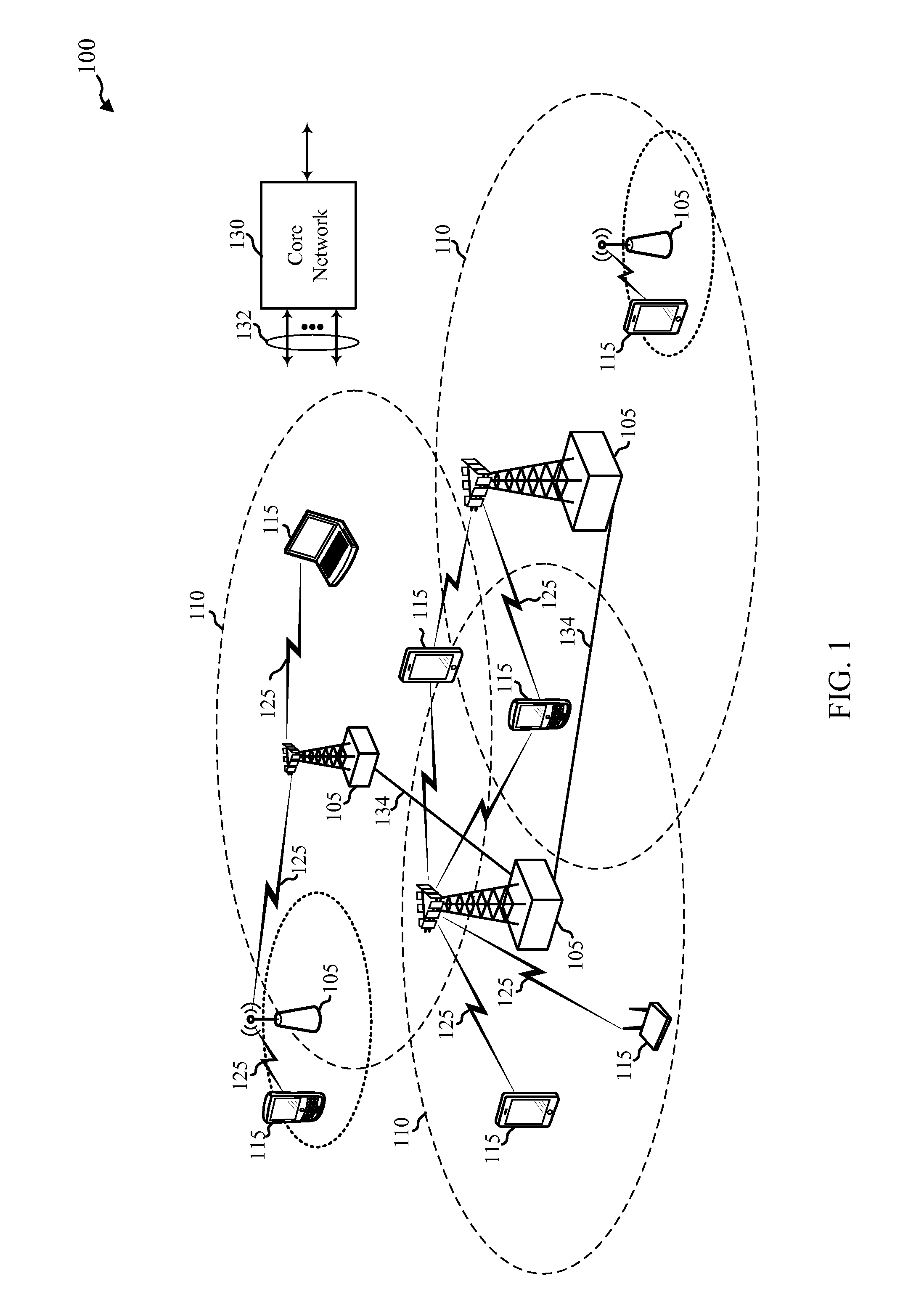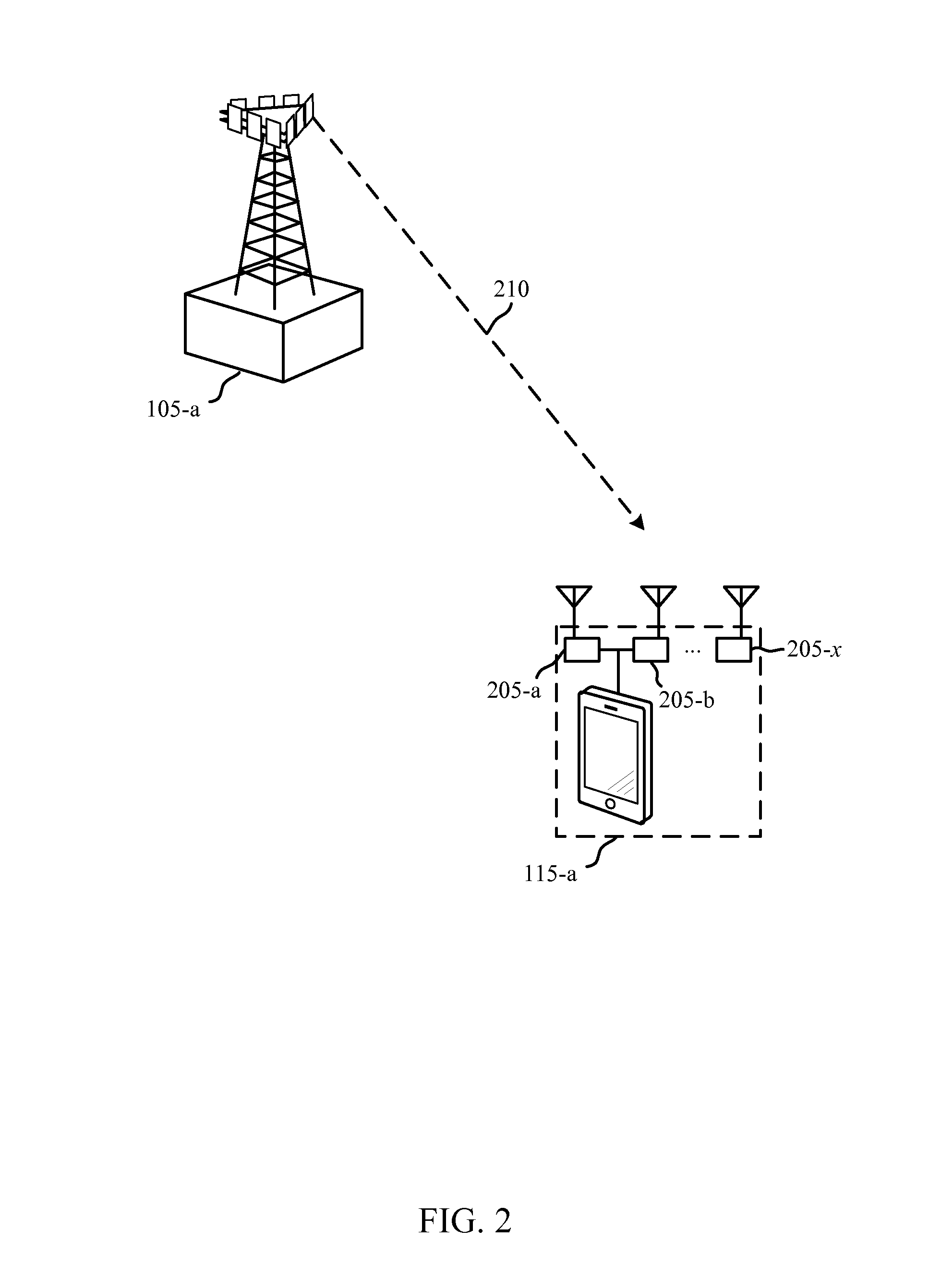Bilateral search algorithm for LTE system
a search algorithm and lte technology, applied in the field of wireless communication systems, can solve the problems of high power consumption, large time and power consumption, and inability to search for lte systems in a linear fashion, and achieve the effect of acquiring a network more quickly
- Summary
- Abstract
- Description
- Claims
- Application Information
AI Technical Summary
Benefits of technology
Problems solved by technology
Method used
Image
Examples
Embodiment Construction
[0033]The described features generally relate to one or more improved systems, methods, and / or apparatuses for acquiring a network by a UE by scanning multiple frequencies concurrently using two or more antennas. In one aspect, the UE may divide the supported frequencies (e.g., EUTRA Absolute Radio Frequency Channel Numbers (EARFCNs)) into two or more groups. In some examples, the UE may support multiple frequency bands and may divide the frequencies according to frequency band. The grouping may additionally or alternatively be based on various organization schemes, such as index numbering (even and odd), random ordering, frequency characteristics, etc. The UE may assign each group of frequencies to an antenna utilized by the UE. The UE may then begin scanning on the odd frequency bands, for example, by a first antenna and on the even frequency bands by a second antenna. Once one of the first or second antennas acquires a network signal (e.g., a Primary Synchronization Signal (PSS))...
PUM
 Login to View More
Login to View More Abstract
Description
Claims
Application Information
 Login to View More
Login to View More - R&D
- Intellectual Property
- Life Sciences
- Materials
- Tech Scout
- Unparalleled Data Quality
- Higher Quality Content
- 60% Fewer Hallucinations
Browse by: Latest US Patents, China's latest patents, Technical Efficacy Thesaurus, Application Domain, Technology Topic, Popular Technical Reports.
© 2025 PatSnap. All rights reserved.Legal|Privacy policy|Modern Slavery Act Transparency Statement|Sitemap|About US| Contact US: help@patsnap.com



